The imperial tomb of Khai Dinh
Built in 1920 and finished in 1931, Khai Dinh tomb is one of the most unique architectural features of the royal art in Hue city. It is the resting place of the 12th Emperor of Nguyen Dynasty – Khai Dinh (1885 – 1925).">
 Built in 1920 and finished in 1931, Khai Dinh tomb is one of the most unique architectural features of the royal art in Hue city. It is the resting place of the 12th Emperor of Nguyen Dynasty – Khai Dinh (1885 – 1925).
Built in 1920 and finished in 1931, Khai Dinh tomb is one of the most unique architectural features of the royal art in Hue city. It is the resting place of the 12th Emperor of Nguyen Dynasty – Khai Dinh (1885 – 1925).
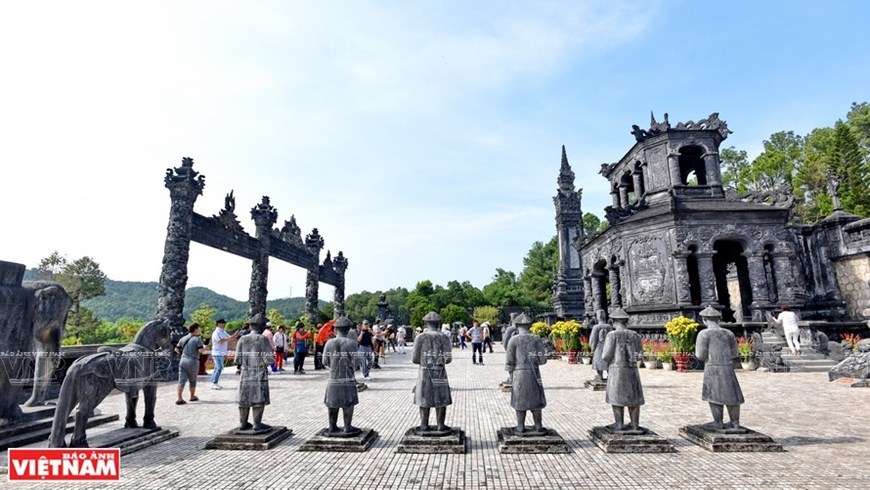 |
|
Honour Courtyard at the Tomb of Khai Dinh (Photo: VNP/VNA)
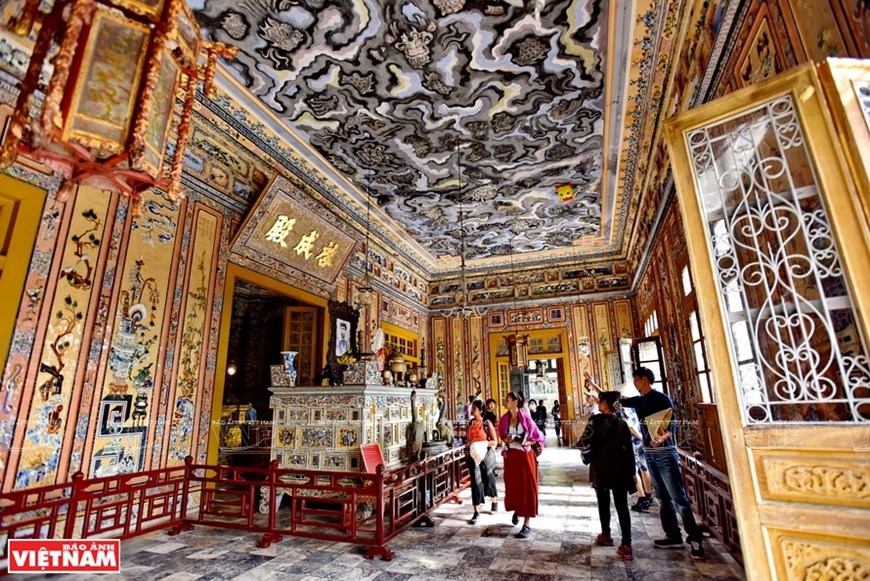 |
|
The walls are densely decorated and inlaid with elaborate glass and porcelain designs. The floor is covered with enameled flower bricks and the ceiling is painted with nine dragons, appearing in fine fleeting clouds (Photo: VNP/VNA)
|
|
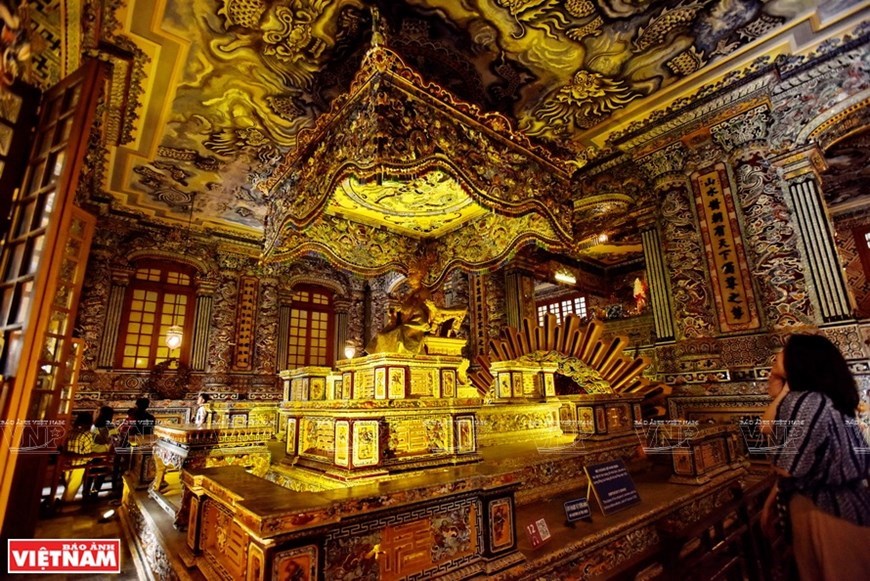 |
|
Under a graceless, gold-speckled concrete canopy is a precious copper statue of Khai Dinh reflecting the exact size of his which was molded in France in 1920 by two French ducing P. and F. Barbedienne upon the request of King Khai Dinh. His remains are interred 18m below the statue (Photo: VNP/VNA)
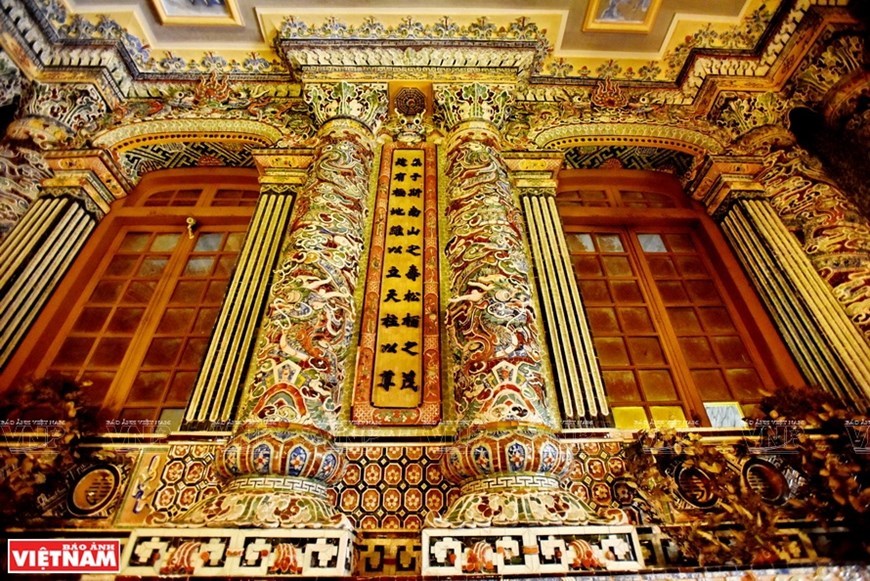 |
|
All of the inner decoration of the palace was made from glass and terracotta. They are royal pictures, tea trays, crown, and many modern items such as alarm clocks, tennis rackets and kerosene which are shown here (Photo: VNP/VNA)
|
|
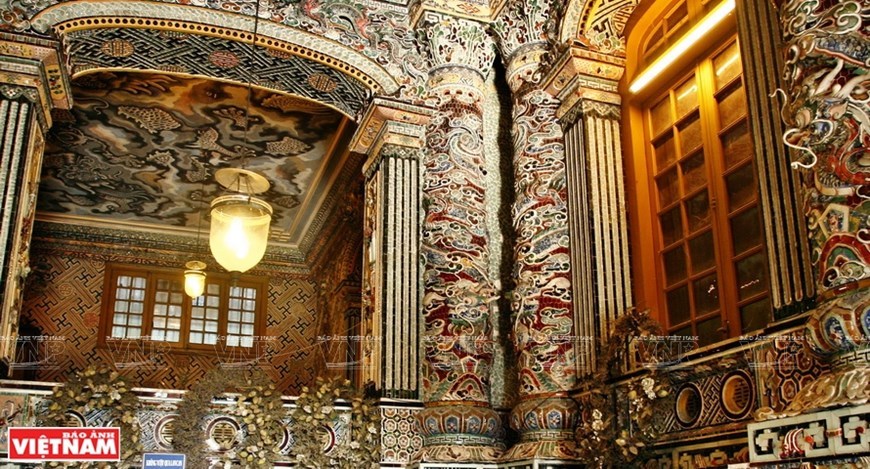 |
|
Skillful workers shape those materials into lively and bright artworks (Photo: VNP/VNA)
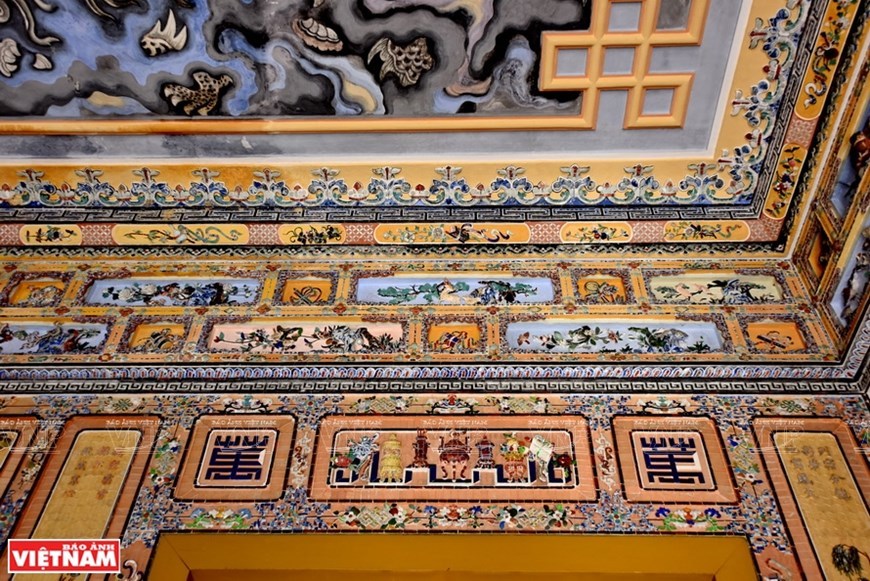 |
|
Khai Dinh tomb becomes the skilled symbol as well as the pinnacle of porcelain and glass (Photo: VNP/VNA)
|
|
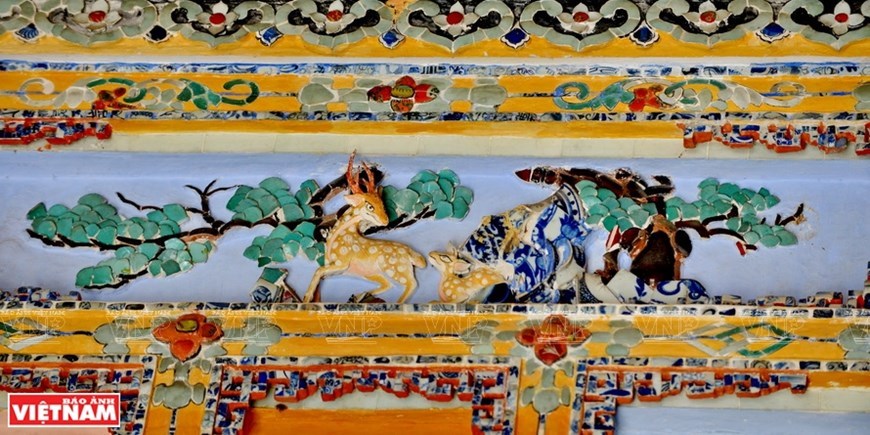 |
|
It is worth being a structure bringing history - architecture – art value and having completely different style tombs of kings before (Photo: VNP/VNA)
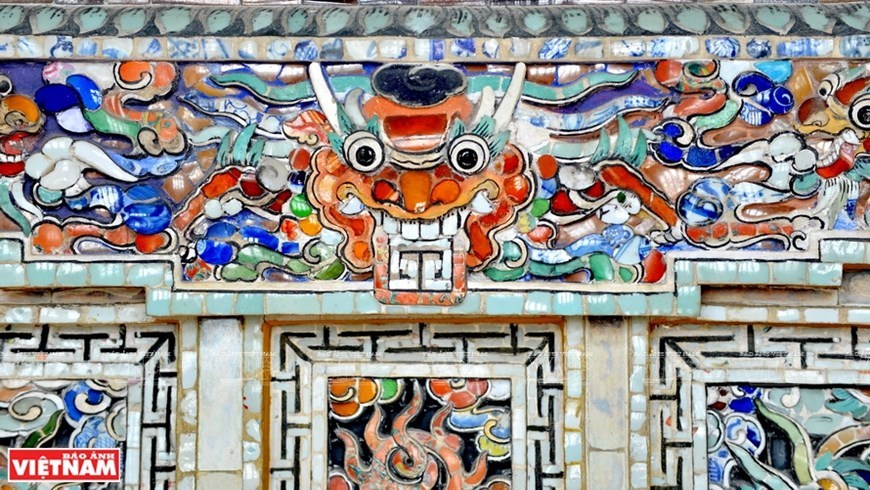 |
|
Skillful workers shaped those materials into lively and bright artworks (Photo: VNP/VNA)
|
|
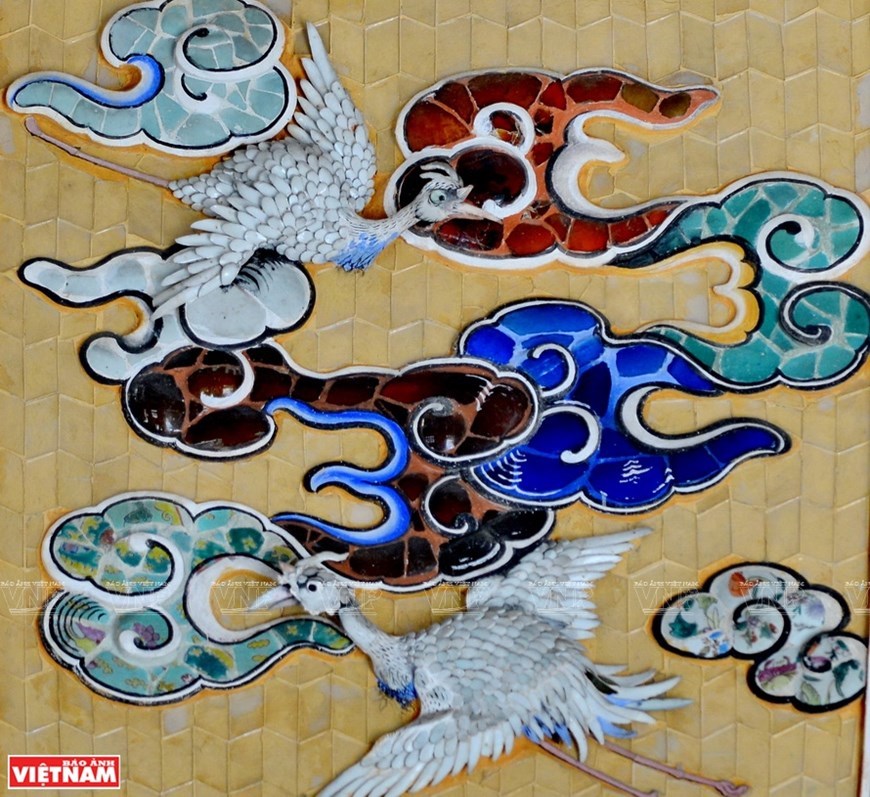 |
|
Skillful workers shape those materials into lively and bright artworks (Photo: VNP/VNA)
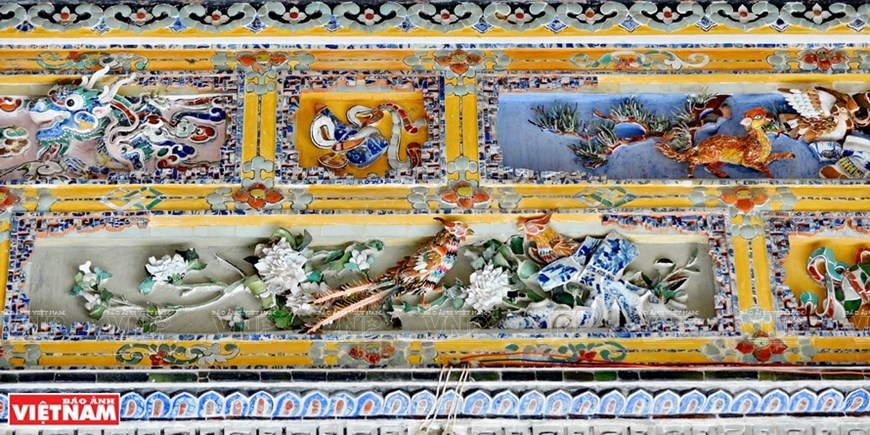 |
|
Skillful workers shape those materials into lively and bright artworks (Photo: VNP/VNA)
|
|
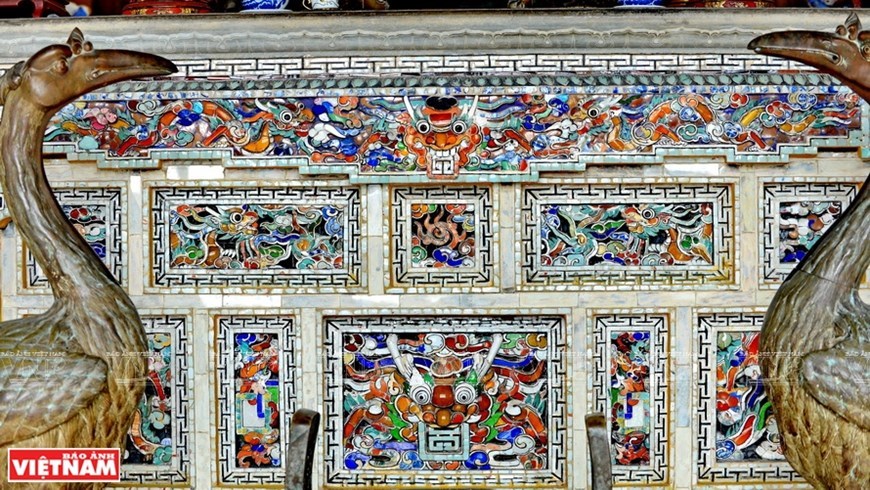 |
|
Skillful workers shape those materials into lively and bright artworks (Photo: VNP/VNA)h
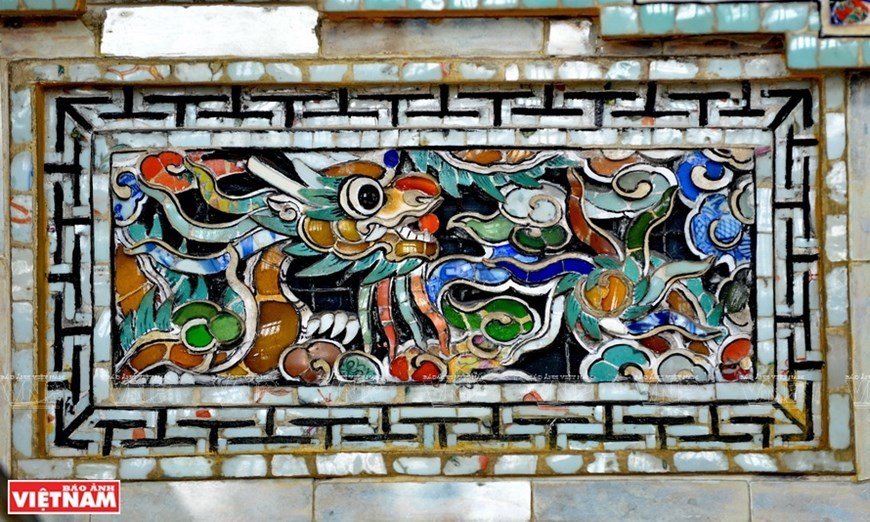 |
|
According to experts, Khai Dinh tomb is the highlight of royal architecture this times (Photo: VNP/VNA)
|
|
VNP/VNA






 Built in 1920 and finished in 1931, Khai Dinh tomb is one of the most unique architectural features of the royal art in Hue city. It is the resting place of the 12th Emperor of Nguyen Dynasty – Khai Dinh (1885 – 1925).
Built in 1920 and finished in 1931, Khai Dinh tomb is one of the most unique architectural features of the royal art in Hue city. It is the resting place of the 12th Emperor of Nguyen Dynasty – Khai Dinh (1885 – 1925).




